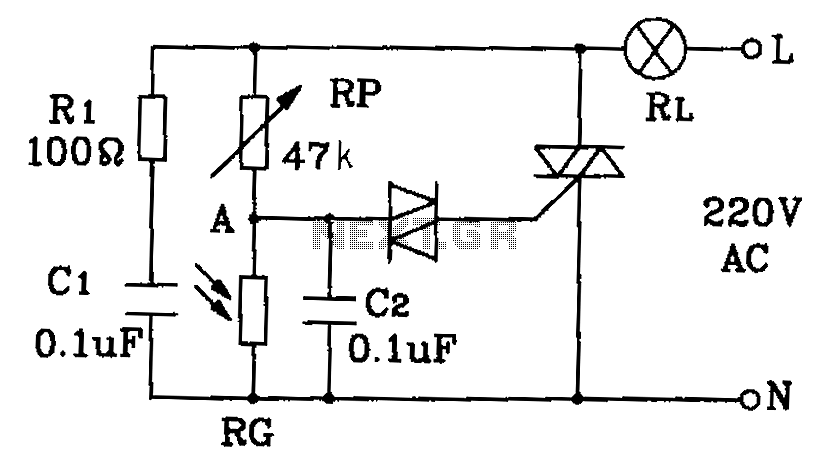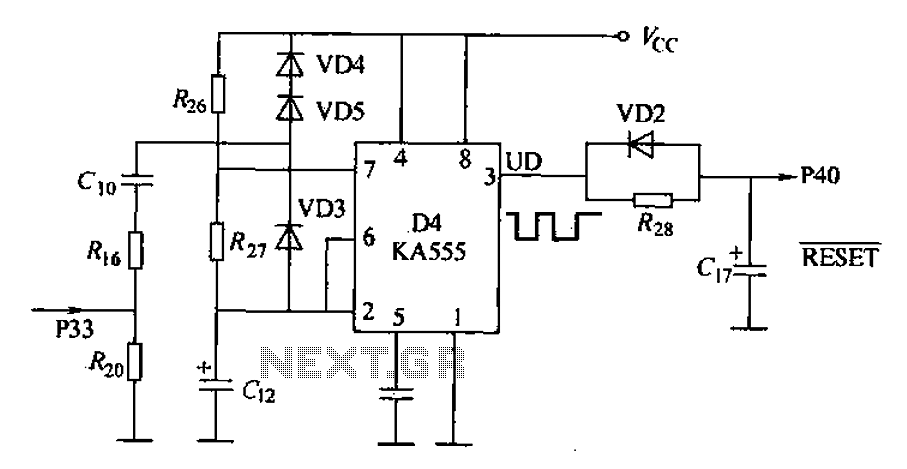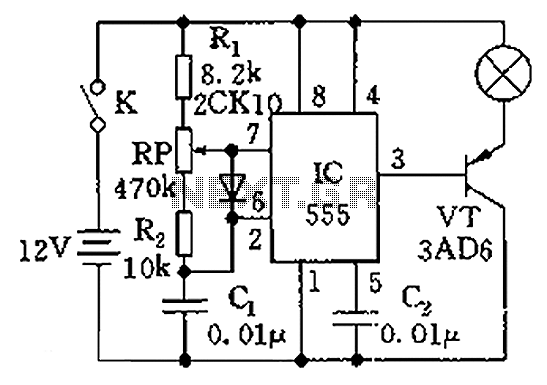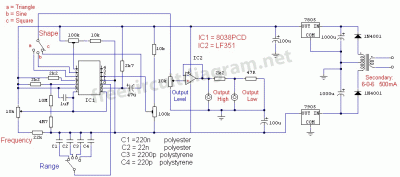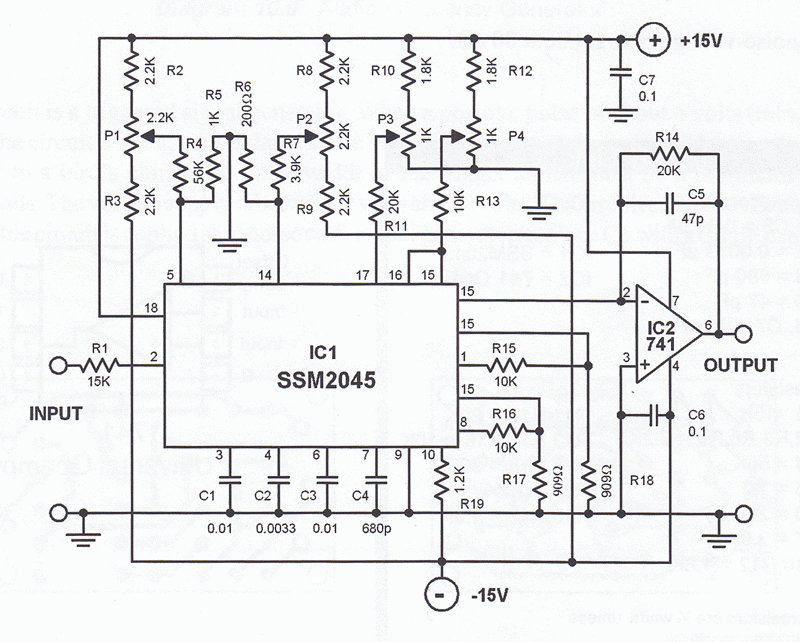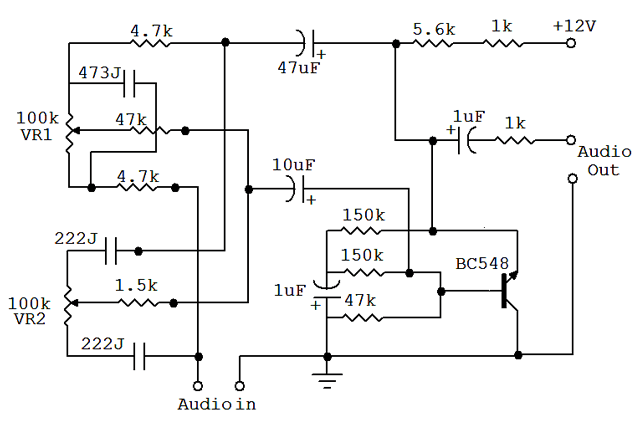
DC relay delayed release circuit 2 b
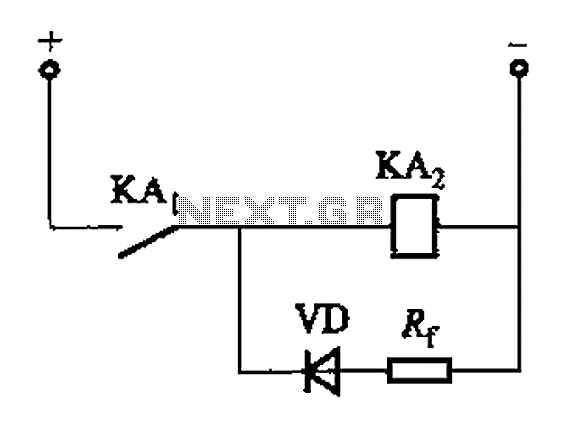
The circuit depicted in Figure 6-24 includes a relay coil with both ends connected in parallel to a resistor (Rf) or an auxiliary diode (VD). This configuration is intended to enhance power after a short circuit occurs in the coil core, resulting in a prolonged release. In Figure 6-24 (b), the resistor Rf is not present.
The relay circuit in question utilizes a coil that, when energized, activates the relay mechanism. Connecting a resistor (Rf) or a diode (VD) in parallel with the coil serves to modify the electrical characteristics of the circuit during the deactivation phase. When the relay coil is energized, it generates a magnetic field that closes the relay contacts. However, upon deactivation, the collapsing magnetic field can induce a voltage spike due to the coil's inductance, which may cause damage to other components in the circuit.
In the configuration with the resistor Rf, the resistor provides a path for the current to dissipate gradually when the relay is turned off. This gradual dissipation helps to mitigate the effects of the induced voltage spike, allowing for a more controlled release of the relay contacts. The presence of the resistor results in a longer time constant for the current decay, which can be beneficial in applications where a delayed release is desired.
In contrast, when the circuit depicted in Figure 6-24 (b) does not include the resistor Rf, the relay coil will experience a more abrupt reduction in current. This can lead to a faster release of the relay contacts but may also result in higher voltage spikes, potentially affecting the reliability and longevity of the circuit components.
Overall, the choice between using a resistor or a diode in parallel with the relay coil depends on the specific requirements of the application, such as the need for a delayed release versus the potential risk of voltage spikes. Proper selection and implementation of these components are crucial for ensuring the effective operation of relay circuits in various electronic systems. Circuit shown in Figure 6-24. Both ends of the relay coil in parallel with a resistor Rf or auxiliary diode VD, is equivalent to power after a short circuit coil core increase, thus making prolonged release. Figure 6-24 (b) of Rf can not.
The relay circuit in question utilizes a coil that, when energized, activates the relay mechanism. Connecting a resistor (Rf) or a diode (VD) in parallel with the coil serves to modify the electrical characteristics of the circuit during the deactivation phase. When the relay coil is energized, it generates a magnetic field that closes the relay contacts. However, upon deactivation, the collapsing magnetic field can induce a voltage spike due to the coil's inductance, which may cause damage to other components in the circuit.
In the configuration with the resistor Rf, the resistor provides a path for the current to dissipate gradually when the relay is turned off. This gradual dissipation helps to mitigate the effects of the induced voltage spike, allowing for a more controlled release of the relay contacts. The presence of the resistor results in a longer time constant for the current decay, which can be beneficial in applications where a delayed release is desired.
In contrast, when the circuit depicted in Figure 6-24 (b) does not include the resistor Rf, the relay coil will experience a more abrupt reduction in current. This can lead to a faster release of the relay contacts but may also result in higher voltage spikes, potentially affecting the reliability and longevity of the circuit components.
Overall, the choice between using a resistor or a diode in parallel with the relay coil depends on the specific requirements of the application, such as the need for a delayed release versus the potential risk of voltage spikes. Proper selection and implementation of these components are crucial for ensuring the effective operation of relay circuits in various electronic systems. Circuit shown in Figure 6-24. Both ends of the relay coil in parallel with a resistor Rf or auxiliary diode VD, is equivalent to power after a short circuit coil core increase, thus making prolonged release. Figure 6-24 (b) of Rf can not.
